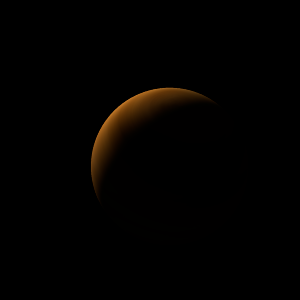|
|
Space Astro
|
Info for exoplanet "Lauq"
| Scientific (actual) data |
|---|
| Name | MARVELS-12 b |
| Planet status | Confirmed |
| Mass sini | 32.8 |
| Orbital period | 252.5 |
| Semi major axis | 0.85 |
| Orbit eccentricity | 0.6 |
| Discovered | 2017 |
| Updated | 2019-02-15 |
| Omega | 326.8 |
| Tzero vr | 2454930 |
| K | 1093 |
| Publication | Published in a refereed paper |
| Detection type | Radial Velocity |
| Star name | TYC 3469-492-1 |
| Right ascension | 203.4° |
| Declination | 52.44° |
| Mag v | 11.3 |
| Star distance | 477.01 |
| Star metallicity | 0.36 |
| Star mass | 1.29 |
| Star radius | 2.39 |
| Star temperature | 5285 |
| Star alternate names | 2MASS J13333594+5226134 |
| Wikipedia article | MARVELS-12 b |
Back
| |
| Fictional info (?) |
|---|
| Suggested name | Lauq |
| Planet type | Cold planet |
| It has the densest atmosphere of all the cold planets, consisting mostly of helium. It may have had ammonium hydrosulfide (NH4SH) oceans in the past, but these would have vaporized as the temperature rose due to a runaway greenhouse effect.
Wind speeds can reach 63 metres per second. |
| Atmosphere | Helium | 62% |
| Sulfur dioxide | 33% |
| Ammonium hydrosulfide (NH4SH) | 2.8% |
| Molecular hydrogen | 1.6% |
| Formaldehyde | 0.0037% |
| Atmospheric pressure | 0.008 bar |
 |
| No known satellites |
| Google search for Lauq |
|
Website by Joachim Michaelis
|
|
|
|